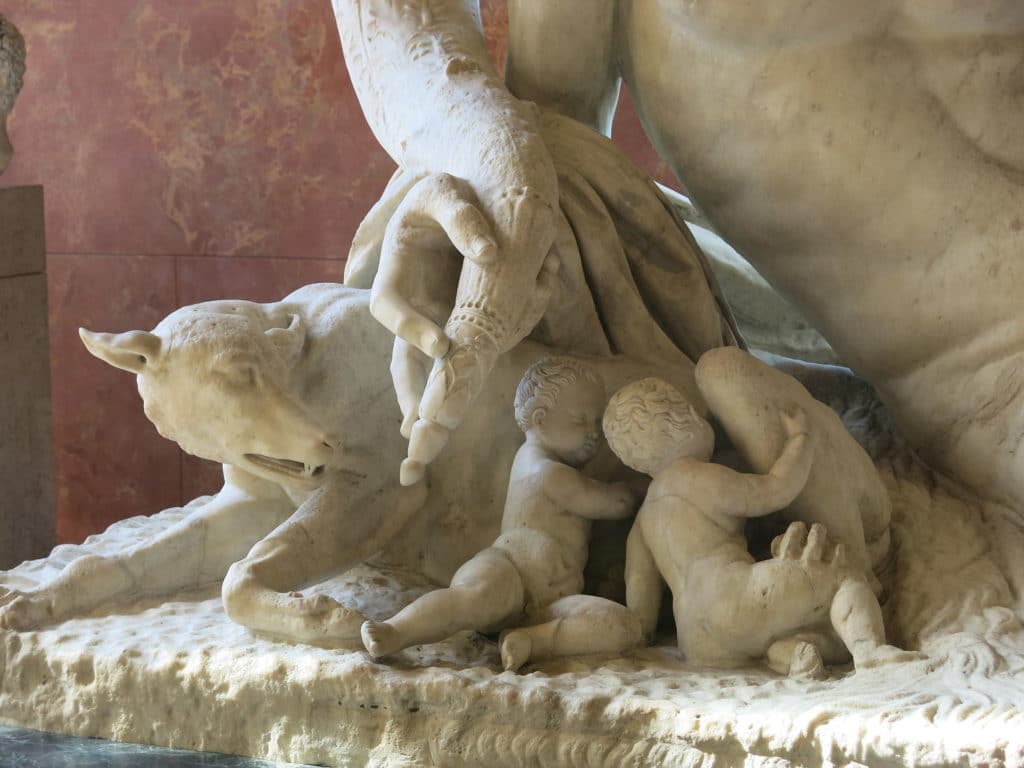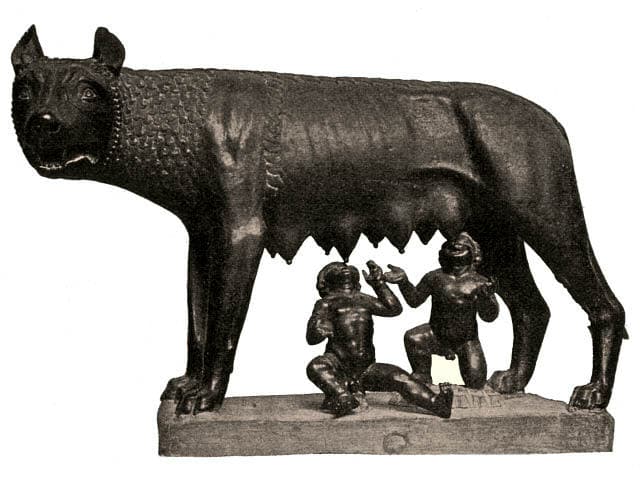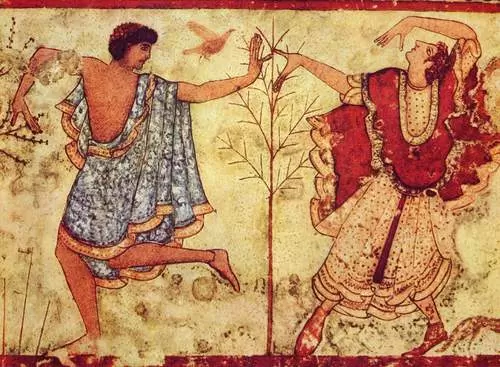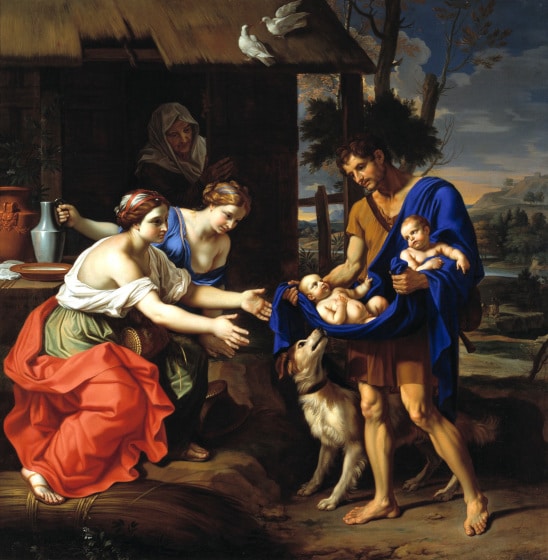Last updated on July 29th, 2022 at 10:11 pm
All cities have their histories, and these often blend elements of myth and reality, particularly when it comes to their earliest history and foundation.
None is more elaborate than the founding of Rome. The myth says that the city was first established on a specific day, the 21st of April in 753 BC. The story is that Romulus and his twin brother Remus founded the city.

The Early Life of Romulus and Remus
Romulus and Remus were born as the grandsons of King Numitor of the city of Alba Longa in central Italy sometime around 780 BC. Their mother was Rhea Silva, Numitor’s daughter and possibly a Vestal Virgin.
Their father was Mars, the god of war, making Romulus and Remus demi-gods. However, when they were still infants, their grandfather Numitor was overthrown as King of Alba Longa by his brother, Amulius.
This Amulius feared that Romulus and Remus would pose a threat to his position and would one day seek vengeance for their grandfather.
Consequently, he ordered the two infants to be drowned in the River Tiber. However, they were saved from this fate by a she-wolf, who nurtured and raised the two infants.
As such, Romulus and Remus were both the sons of the god of war and were raised by a wolf. All aspects of their story fit with the Romans’ conception of themselves as strong, warlike people.

Eventually, Romulus and Remus grew up, and in 753 BC, they are said to have founded the city of Rome on the seven hills, which the city was centered around the banks of the River Tiber.
However, a dispute arose shortly afterward between the two brothers over what the city should be named and who should rule over it. In the course of this, Romulus killed Remus, so named the city Rome after himself, and became its first king.
This story was the foundation myth that the Romans espoused throughout their long 1000-year-plus history.
How was Rome Actually Established
Today we know that the story of Romulus killing Remus and then establishing the city of Rome is a myth.
Over the last century, archaeologists have comprehensively demonstrated that the Palatine Hill on the River Tiber was settled as early as the tenth century BC, some 200 years before the twins are alleged to have established the city.
Other villages emerged on the seven hills soon afterward. Finally, around the eighth century, these joined together into a town of sorts.

This town eventually expanded into the city of Rome. In its early days, the Etruscans, a more advanced Italian people based out of Tuscany, dominated the city.
However, from the late sixth or early fifth centuries BC, Rome began its long ascent as the dominant power in central Italy.
Sources for the Myth of Romulus and Remus
It is easy to see why the Romans liked the foundation myth of Romulus and Remus.
It is an impressive story that suggests that Rome’s dominance of its neighbors and then most of the known world was divinely ordained.
After all, their first king was the son of the god of war. Romans wrote about the myth of Romulus and Remus throughout their history.
For instance, one of the greatest historians of the Roman Republic, Livy, discussed it at length in his monumental work Ab Urbe Condita, meaning ‘From the Founding of the City.’
The second-century AD Greco-Roman historical biographer, Plutarch, wrote a life of Romulus, which drew on many other ancient histories now lost to us.
And many others discussed it, including the noted third century AD historian Cassius Dio and a contemporary of Livy’s, the Roman love poet, Ovid.
The Aeneid and Virgil’s Elaboration on the Myth
Of all the Romans who wrote about the foundation of Rome, the most celebrated was Virgil, the first century BC epic poet. However, curiously enough, Virgil did not write much directly about Romulus and Remus.
Instead, his most famous work, the Aeneid, was written about a character called Aeneas.
Aeneas was a demi-god himself, as he was a son of the Greek goddess of love, Aphrodite, and Anchises, a prince of the royal family of the city of Troy.
Virgil depicts Aeneas as having fled from Troy after its fall following the siege of the city by the Greeks so famously detailed in Homer’s Iliad.
He brought the Sword of Troy, which had belonged to his cousin, King Priam of Troy.
Aeneas wandered the Mediterranean with his followers for years after the fall of Troy, eventually reaching Italy, where he and his followers settled down after many trials and tribulations.
There they settled what would become the city of Alba Longa, and Aeneas founded its royal family. Thus, as Virgil depicted it, Romulus and Remus were the descendants of Aeneas.
Virgil added to the myth of Romulus and Remus by suggesting they were descended from the royal family of fabled Troy and that as well as being the sons of the god Mars, their forbear Aeneas had been the son of Aphrodite.
Virgil’s elaboration of the foundation myth of Rome became intertwined with that of Romulus and Remus and was accepted by contemporaries of the poet as the national history of Rome’s foundation.
The Long Life of an Elaborate Foundation Myth
The myth of Romulus and Remus had a long afterlife. Not only was it widely believed and written about by the Romans themselves, but it was picked up and refreshed in many different ages after that.
This was especially the case during the fifteenth and sixteenth centuries when many artworks revolving around the myth were produced in Renaissance Italy.
For instance, in the sixteenth century, the wealthy Magnani family in Bologna commissioned an entire series of paintings depicting the significant episodes from the life of Romulus and Remus.
Dozens of other Italian artists painted similar scenes. Then, in the early seventeenth century, the practice of depicting the founders of Rome spread to northern Europe.
One of the greatest painters of the Dutch Golden Age, Peter Paul Rubens, painted a famous scene in 1615 of Romulus and Remus being nurtured by the she-wolf.
Finally, in 1654 Nicholas Mignard, a French master of the early Baroque period, produced one of the seventeenth century’s great paintings entitled The Shepherd Faustulus Bringing Romulus and Remus to His Wife showing a scene from right after the twins were nearly drowned.

Consequently, even nearly two and half millennia after Romulus and Remus were said to have founded Rome, their story still captured the imaginations of Europeans.

